
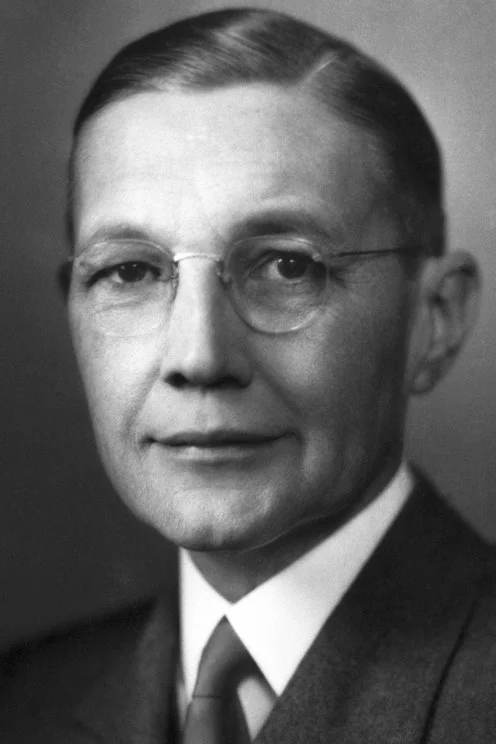
2024 Erlanger-Gasser Lecture
Please join us September 24th at 3:00 pm in Moore Auditorium for the 2024 Erlanger-Gasser Lecture as we welcome Dr. Tom Schwarz of Harvard Medical School as our guest lecturer!
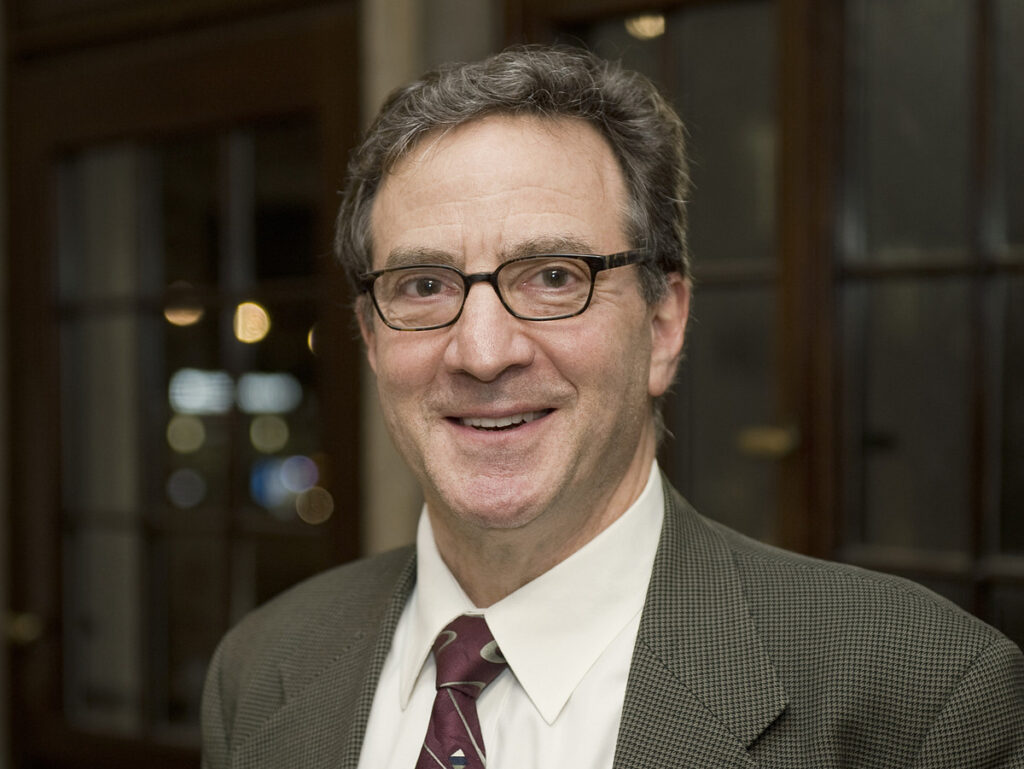
2023 Erlanger-Gasser Lecture
Thank you to everyone who attended the 2023 Erlanger-Gasser Lecture featuring our guest speaker Dr. Jonathan Weissman!
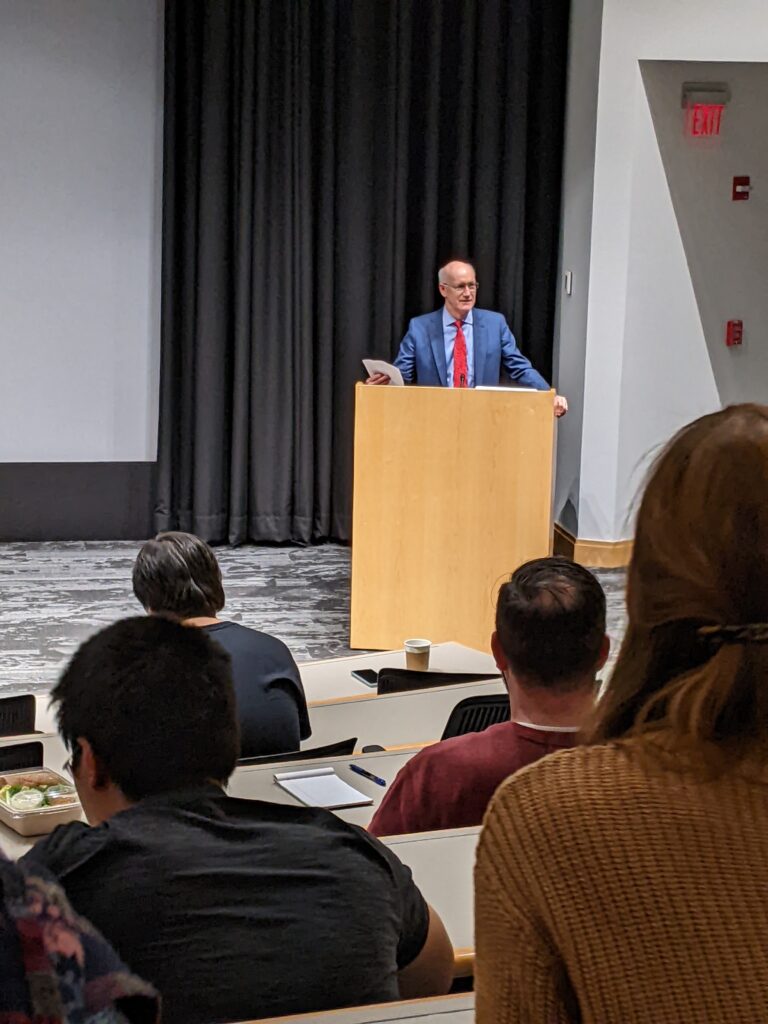
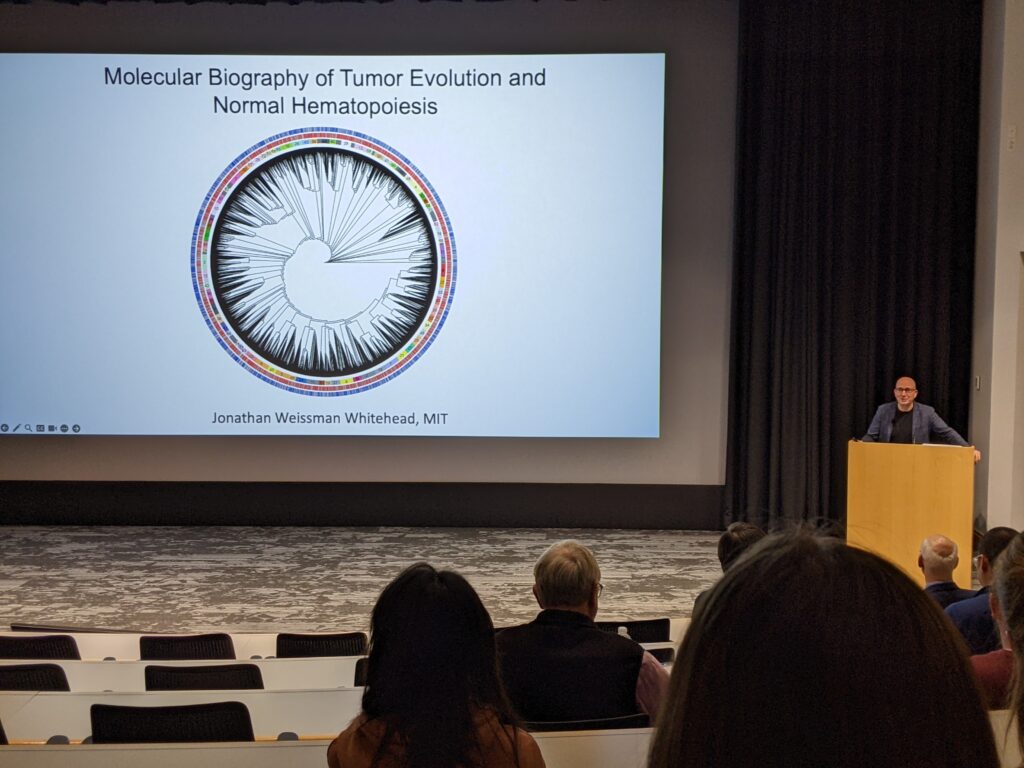
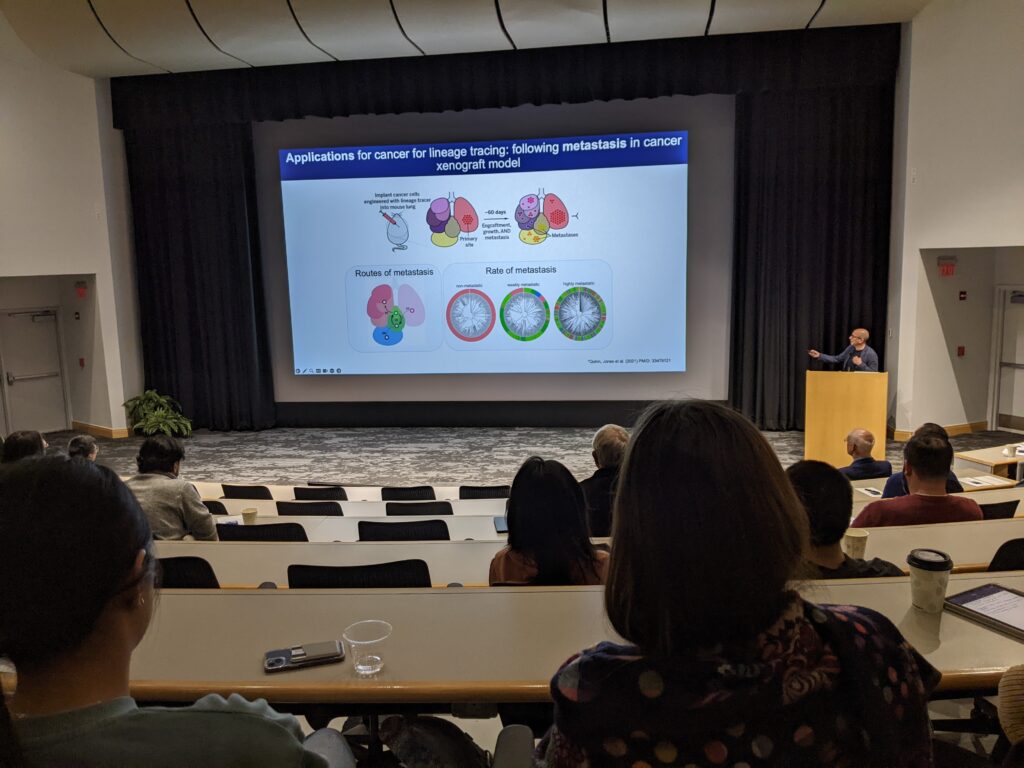


In 1910, at the age of 36, Joseph Erlanger was invited to Washington University to head the Department of Physiology in the newly reorganized School of Medicine. He had received his M.D. from Johns Hopkins in 1899, after which he became a member of the faculty in Physiology there. Six years later, he became Professor of Physiology at the University of Wisconsin. In 1909, a 21-year-old student named Herbert Gasser took a number of courses at the medical school at Wisconsin, one of which was Erlanger’s course in Physiology. This was so different from what he had expected that he described it as a “revelation.” Gasser went to Johns Hopkins to complete his medical studies and returned to Wisconsin as an Instructor in Pharmacology.
Soon after the new buildings at Washington University were ready for occupancy, Erlanger invited Gasser to join his department. During his first year in St. Louis, the United States entered the first World War; he and Erlanger collaborated in war-related studies on shock. When the war was over, and Gasser returned from a brief period in Washington, they developed a new collaboration in studies on fundamental properties of nerve. While Erlanger had already done important work on the spread of excitation in the heart, Gasser had yet to find his research interest. The problem of recording nerve activity was a topic of discussion between them. The technical impasse was the need to amplify the small potentials which could be recorded from nerve and to have a recording device fast enough to follow the rapid changes.
Newcomer, a classmate of Gasser at Johns Hopkins with a background in physics, had built an amplifier using vacuum tubes that he brought to St. Louis. He and Gasser recorded the action potentials of the phrenic nerve using a string galvanometer, but this device had too much inertia to follow the potential changes with fidelity. The cathode ray or Braun tube was known to have the requisite speed but required very large voltages to deflect the electron beam. Gasser learned that Western Electric had developed a cathode ray tube with a heated cathode that had much greater sensitivity. With the gain available from Newcomer’s amplifier, the potentials from peripheral nerve could now be recorded with fidelity. Erlanger and Gasser built and assembled the requisite equipment for stimulation and recording. With it they investigated the characteristics of conduction in nerve axons.
Together with George Bishop, who subsequently joined in the work, they determined the speed of conduction in nerve fibers and its relation to axonal diameter, the independence of action potentials in individual nerve fibres, the time course of the individual action potentials, the refractory period after an action potential and a host of other properties that are fundamental to our understanding of nerve physiology. It is amazing to think that for several years the only electrophysiological equipment in the world employing a cathode ray oscilloscope was in the basement of the South Building of this medical school.In 1921, at the age of 33, Gasser was named Head of the Department of Pharmacology at Washington University. Abraham Flexner arranged for him to spend two years visiting laboratories in Europe. Following this interruption, he rejoined Erlanger and Bishop. They were very successful in reconstructing the compound action potential from the fiber diameter spectrum, their values for action potential size and duration, and assuming a linear relation between axon diameter and conduction velocity. In 1944, Erlanger and Gasser were awarded the Nobel Prize in Physiology or Medicine for these studies.
In 1932, Gasser moved to New York as Chairman of the Department of Physiology at Cornell Medical School. Three years later, he was appointed Director of the Rockefeller Institute for Medical Research, a post he held until his retirement in 1953. He then returned to the laboratory and again turned his attention to peripheral nerve. During these years, he made important discoveries on unmyelinated nerve axons. He died in 1963. Erlanger remained as Head of Physiology at Washington University until 1946. He continued working on problems of peripheral nerve including excitation, effects of polarization and repetitive firing of axons. In addition to research, he contributed much as an administrator and teacher. A founding member of the Executive Faculty, he played a large role in the building of the modern Washington University School of Medicine. He died in 1965.
The Erlanger-Gasser Lectures were initiated in 1989 to commemorate the contributions made by Joseph Erlanger and Herbert Gasser to Physiology and Medicine. Erlanger and Gasser won the Nobel Prize in Medicine in 1944 for the introduction of the oscilloscope to study of electrical activity in the nerve, a technical breakthrough that led ultimately to the measurement of ionic currents and the mechanism of action potential. The department hosts a yearly Erlanger-Gasser Lecture as an opportunity to honor these two pioneering scientists and to bring luminaries in biomedical science to describe their achievements to a wide audience from around the medical school.
Please allow us to continue this amazing lectureship by giving your gift of support.
Past Erlanger-Gasser Lecturers
| 2024 | Tom Schwarz, Ph.D. Harvard Medical School |
| 2023 | Jonathan Weissman, Ph.D. MIT |
| 2022 | Eva Nogales, Ph.D. UC Berkeley |
| 2019 | Lynn E. Maquat, Ph.D. University of Rochester Biomedical Research |
| 2016 | Robert A. Weinberg, Ph.D. MIT and Whitehead Institute for Biomedical Research |
| 2014 | Peter C. Agre, M.D. Johns Hopkins Malaria Research Institute |
| 2013 | Michael P. Sheetz, Ph.D. Columbia University, New York |
| 2012 | Ronald Vale, Ph.D. University of California, San Francisco |
| 2011 | Gregory Hannon, Ph.D. Cold Spring Harbor Laboratories |
| 2010 | Tony Hunter, Ph.D. Salk Institute |
| 2009 | Pietro De Camilli, M.D. Yale University |
| 2008 | Carol W. Greider, Ph.D. The Johns Hopkins University |
| 2006 | Thomas D. Pollard, M.D. Yale University |
| 2004 | Anton J. Berns, Ph.D. The Netherlands Cancer Institute |
| 2003 | Wolfhard Almers, Ph.D. Vollum Institue, OHSU |
| 2002 | Clay M. Armstrong, M.D. University of Pennsylvania |
| 2000 | Floyd E. Bloom, M.D. Scripps Research Institute |
| 1998 | Gerald D. Fishbach, M.D. National Institutes of Health |
| 1996 | Alfred G. Gilman, M.D., Ph.D. University of Texas, SW Medical Center |
| 1995 | Gunter Blobel, M.D., Ph.D. Rockefeller University |
| 1994 | Edwin G. Krebs, M.D. University of Washington |
| 1992 | Bert Sakmann, M.D. Max-Planck Institut |
| 1992 | Sir Andrew Huxley, O.M., F.R.S. Trinity College, Cambridge |
| 1991 | George E. Palade, M.D. University of California |
| 1990 | Stanley Cohen, Ph.D. Vanderbilt University |